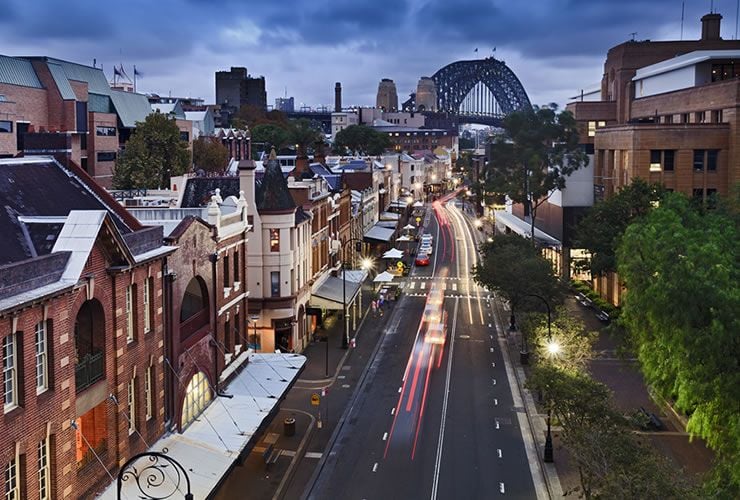Australian Dollar Forecast: 6% Upside in 2018
- Written by: James Skinner

Forecasters at global financial services giant UBS estimate some decent gains for the Australian currency in 2018 as the RBA raises rates faster than markets are currently expecting.
The Australian Dollar is estimated to be 8% undervalued by analysts at UBS, a situation that should correct over the course of 2018 we are told.
Supportive financial and global economic conditions should help to close some of this gap as higher yielding “carry currencies” will remain favoured - a club the Aussie Dollar is part of thanks to the Reserve Bank of Australia's base rate of 1.50%.
The observation that the Australian currency is undervalued by about 8% is derived from the FEER (fundamental equilibrium exchange rate) model deployed by UBS which inputs a number of economic and financial conditions to arrive at a fair-value exchange rate.
Above: The Pound-to-Australian Dollar exchange rate has edged higher over 2017 as the Australian Dollar softened
Recent global and domestic events have seen the Aussie currency fall well below fair-value it seems, and the expectation is that this undervaluation is unlikely to persist.
“The AUD's leverage to global growth and trade is well represented by Australia's return to a trade surplus towards the end of last year,” says Joakim Tiberg, a foreign exchange strategist at UBS. “Notably, the trade balance has remained in healthy surplus territory despite the moderation in commodity prices since Q1-2017.”
Despite pockets of risk in Europe, North America and further afield, the outlook for global economic growth is bright for 2018. UBS economists forecast global GDP growth of 3.8% in 2018 and 2019, up from the 3.1% seen in 2016.
“Global tailwinds are enhancing the recovery from the sharp correction in mining activity during the last few years,” says Tiberg. “In addition, resilient Chinese activity in particular mitigates risks emanating from Australia's large exposure to China.”
Chinese economic growth is seen slowing steadily over the coming years, reaching a low of 6.3% in 2019, down from the 6.7% seen in 2016.
A Chinese slowdown could weigh on commodity prices, particularly that of Australia’s largest export, iron ore.
“At the same time, however, the softer the landing of the Chinese economy, the more supportive global financial conditions and risk sentiment for carry currencies such as the AUD becomes,” Tiberg counters.
AUD/USD rate shown at daily intervals. Captures 2017 gains and second-half weakness.
One reason why the Australian Dollar has tended to underperform over recent months is the fall in value of iron ore - Australia's number one export.
Iiron ore prices have dropped 25% since August, and as we note here China's attempts to fight inflation over the winter months are likely to keep demand for Australia's key foreign exchange earner subdued.
While the effects of iron ore market dynamics might weigh on the Australian Dollar, the domestic economy and Reserve Bank of Australia is where upside impetus might be found.
RBA Support
“Although inflation will likely remain modest for some time, our economists expect price pressures to be strong enough to trigger three rate hikes by the end of 2019,” says Tiberg. “This is more than the market pricing of roughly two hikes and we expect AUD to be supported by incrementally hawkish RBA rhetoric during the second half of 2018.”
The Reserve Bank of Australia has held the cash rate at 1.5% for fifteen meetings in a row and, particularly in recent weeks, markets have come close to giving up any hope that the central bank will feel compelled to act any time soon.
But if UBS are correct, and more interest rate rises than the market is expecting come to fruition, there is substantial upside potential to be found.
Investors have long been attracted to the superior yield on offer in Australia - the 1.5% basic interest rate means returns right across the financial market place are naturally higher than in most developed market. Compare the 1.5% base rate with the UK's 0.5% base rate. The potential to borrow in Pounds and invest in higher-yielding Aussie assets incentivises the flow of currency from the UK to Australia.
Should that incentive grow over coming months as the RBA raises rates, then we could see the Australian Dollar rise further.
“Thus we see scope for a correction of the residual undervaluation in AUD (c. 8% according to our FEER model) as the RBA gradually moves to a tighter policy stance,” Tiberg concludes.
The UBS team forecast the AUD/USD rate will rise to 0.8100 by the end of 2018. This implies a near 6% gain for the exchange rate and marks a level only seen twice by the Australian Dollar since January 2015.
AUD/USD rate shown at weekly intervals. Captures commodity collapse and 2017 trading.
Get up to 5% more foreign exchange by using a specialist provider by getting closer to the real market rate and avoid the gaping spreads charged by your bank for international payments. Learn more here.




